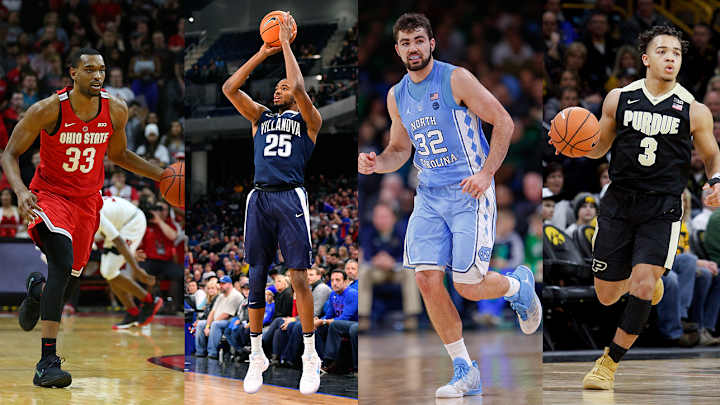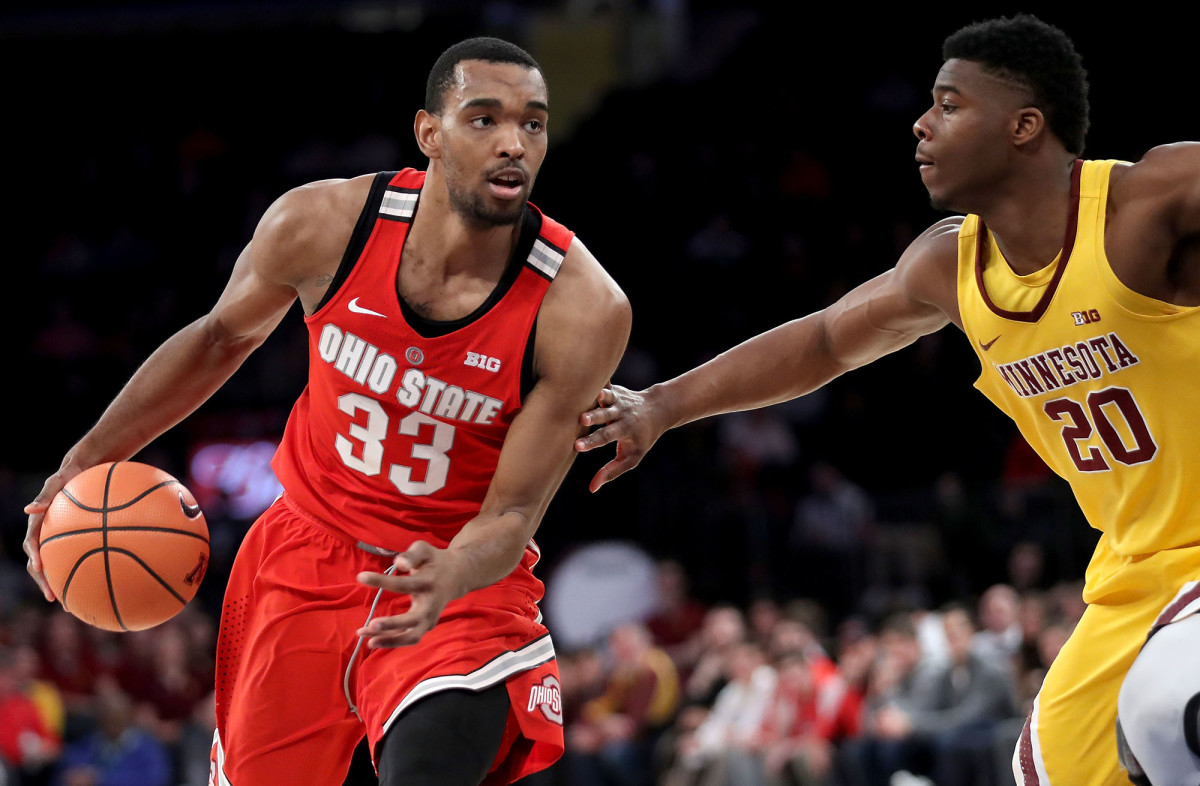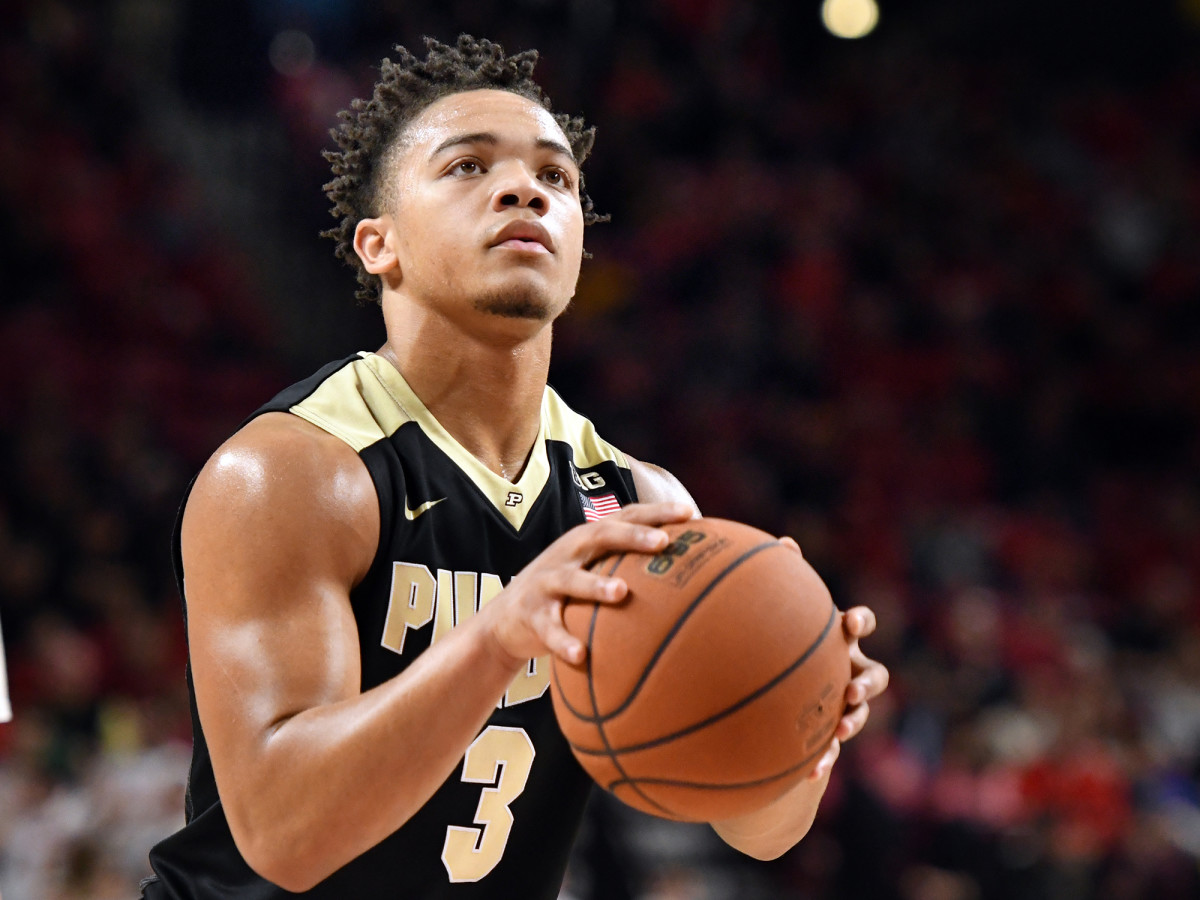Four Returning Players Who Have Made the Leap This Season

Two of the best players in the country this season are freshmen. Oklahoma’s Trae Young and Duke’s Marvin Bagley III entered the college game ready to put up eye-popping numbers and lead their teams on conference championship runs. Both have become must-see viewing propositions during the regular season, and it’ll be fascinating to watch how far they can take their teams in March. However, this week, we’ve chosen to ignore Young, Bagley and their freshmen counterparts. SI.com is highlighting four returning college players who’ve made major leaps from their previous seasons, whether because of improved performance, greater opportunity or some combination of the two. It must be noted that this is not a comprehensive list, though it does skew toward teams tracking toward favorable NCAA tournament seeds. Just because your team’s veteran star didn’t make the cut does not mean we don’t notice what he’s done this season.
This is the ninth version of a weekly column analyzing four college hoops topics bound by some underlying narrative thread. If there’s something you’d like to see in this space, don’t hesitate to reach out to me.
Keita Bates-Diop, redshirt junior, Ohio State
The jump Bates-Diop has taken in 2017–18 probably wouldn’t have felt this large had he been available for most of last season. The 6’7”, 235-pound forward appeared in only nine games before being shut down due to a stress fracture in his leg as the Buckeyes won only 17 games and missed the NCAAs for the second consecutive year. Bates-Diop has lifted Ohio State past that total already, and it would take a precipitous dip for the Buckeyes to miss the tourney. More than three years after arriving in Columbus as a top-30 recruit in the class of 2014, Bates-Diop is the primary driver of Ohio State’s surprising surge in its first season under new head coach Chris Holtmann, and he’s making a serious run at becoming the first Buckeyes player since No. 2 NBA draft pick Evan Turner in 2009–10 to be named Big Ten Player of the Year. Bates-Diop is taking on a larger share of Ohio State’s offensive workload and scoring more efficiently than he did during his last full season in 2015-16. Over 22 games, he’s raised his two-point shooting percentage to 57.8 from 52.5, his three-point shooting percentage to 36.6 from 32.4 his free throw percentage to 80.5 from 78.7. Bates-Diop has been more accurate in two of those three categories during Big Ten play than over the entire season (3PFG% and FT%), and he’s leading the conference in defensive win shares while rating out as one of its most effective defensive rebounders and shot blockers.

Putting aside his statistics for a moment, Bates-Diop has guided Ohio State into territory virtually no one envisioned it entering before the season began. In November, the Buckeyes were picked to finish 11th in the Big Ten in a media poll conducted by The Athletic. As of Thursday, they’re 9-0 in league play with a solid chance to get to 12-0 before traveling to face No. 3 Purdue in West Lafayette on Feb. 7. Ohio State’s next three games come at home against teams (Penn State, Indiana, Illinois) ranked outside the top 60 of Ken Pomeroy’s ratings.
Mikal Bridges, redshirt junior, Villanova
This spot easily could have gone to one of Bridges’s teammates, junior point guard Jalen Brunson, but Bridges gets the nod on account of his sizable increase in offensive usage without an attendant nosedive in efficiency. As a redshirt sophomore last season, Bridges ranked seventh among Villanova players with a 15.3 usage percentage. This season, there’s just one teammate with a higher usage percentage than Bridges’s 23.4, and he’s one of only three qualifying Big East players with a usage percentage of at least 23 and an offensive rating of at least 128, according to Sports Reference. (The other two are Brunson and Xavier big man Kerem Kanter.) Bridges has raised his scoring to 21.4 points from 13.1 points on a per-40 minute basis, his three-point shooting percentage to 43.1 from 39.3 and he’s getting to the free-throw line more often. The uptick in offensive output hasn’t detracted from Bridges’s work on the other end of the floor. Bridges is a rangy stopper who stands 6’7”, 210 pounds with a reported wingspan longer than seven feet who can credibly check four positions, and his presence is the biggest cause for optimism about the viability of the Wildcats’ suspect D over the course of a potential deep run in the NCAAs. (They rank outside the top 25 in Division I in Ken Pomeroy’s adjusted defensive efficiency.)
Compared to last season, Bridges is blocking a higher percentage of opponents’ two-point field goal attempts while he’s on the court and posting a higher defensive rebounding percentage. He ranks in the top five among Big East players in defensive win shares and defensive box plus minus and Villanova has given up 0.16 fewer points per possession with him on the floor, according to data from Hoop Lens. Bridges has evolved from a complementary role guy on a national championship Villanova team to a co-star on a different Villanova team that looks set to enter March as no worse than a co-favorite to claim another national championship this season. In the process, Bridges has positioned himself to be selected in the lottery of this summer’s draft.

Carsen Edwards, sophomore, Purdue
Maybe we should have seen Edwards’ breakout coming. After all, he was one of only 12 players selected to compete with USA Basketball at the FIBA U19 World Cup in Cairo last summer, and he led the team in both minutes per game and assists per game. That said, as a freshman he recorded as many turnovers as assists per 40 minutes, and only one teammate on scholarship posted a lower effective field goal percentage, which adjusts for the added value of the three-point shot. He also wasn’t chosen as one of the Big Ten’s 10 preseason all-conference honorees and he missed the cut on the list of top 100 players SB Nation released in early November. Nor did Edwards’s recruiting pedigree hint at what was to come during his sophomore season: 24 point guards in the class of 2016 were rated higher than Edwards was coming out of Atascocita (Tex.) High, according to the 247Sports Composite. This season, there aren’t 24 players in the sport more valuable than Edwards. He’s a critical piece of the only team in the country that rates in the top five of Ken Pomeroy’s adjusted offensive and defensive efficiency metrics, one that hasn’t lost a game since a four-point slip-up against Western Kentucky on Thanksgiving Day in the Bahamas, should be heavily favored in all but one of its remaining conference matchups (at Michigan State on Feb. 10) and continues to amass evidence that it can earn the program’s first Final Four berth since 1980. Edwards isn’t just shooting better from both sides of the three-point arc and the free-throw line than he did last season. He’s assisting on a significantly higher percentage of his teammates’ baskets while he’s on the floor, taking much better care of the ball and earning more trips to the free throw line. The net effect has elevated Edwards onto the short list of the country’s top guards not named Trae Young. Edwards wouldn’t be performing at this level without other members of the Boilermakers’ balanced rotation, including seniors Vincent Edwards (not related) and Dakota Mathias, diverting defensive attention away from him, but Carsen Edwards ought to be singled out for his remarkable rise.
Luke Maye, junior, North Carolina
Maye was not a complete non-entity when he became a North Carolina folk hero last March by draining a deep two-point shot with less than a second remaining to send the Tar Heels past Kentucky and into the Final Four. He’d posted better numbers in more minutes as a sophomore than he did as a freshman, and casual references to Maye as a “former walk-on” gloss over the fact that, as the state of North Carolina’s No. 3 prospect in the class of 2015, according to the 247Sports Composite, he reportedly drew scholarship offers from brand-name programs like Notre Dame and Gonzaga before choosing to attend the same school where his father played quarterback in the 1980s. But it was difficult to foresee Maye raising his game to these heights as a junior. Part of the bump owes to a major playing time hike (14.1 minutes per game in 2016-17 to 32 in 2017–18) facilitated by a depleted frontcourt rotation; Tony Bradley and Justin Jackson both entered the draft, and Isaiah Hicks and Kennedy Meeks were seniors last season. Maye has been more productive during his increased time on the court. He’s drawing more fouls per 40 minutes, taking a larger percentage of his team’s shots, registering better shooting percentages from 2 and from 3, swatting more of his opponents’ two-point field goal attempts, committing fewer turnovers, and only six ACC players have pulled down a higher percentage of available defensive rebounds during conference play, according to kenpom.com. Maye’s emergence has enabled Roy Williams to construct an ACC contender with a thin frontcourt rotation. Dating to their 30-point win over Boston College in Chapel Hill on Jan. 9, the Tar Heels have rolled with a small starting lineup in which Maye is the nominal center. The unit is composed of 6-foot senior Joel Berry II, 6’4” junior Kenny Williams, 6’6” senior Theo Pinson, 6’8” Pittsburgh graduate transfer Cameron Johnson and Maye, who’s listed at 6’8”, 240 pounds. North Carolina has gone 4-1 over that stretch, with its lone loss coming on Monday at Virginia Tech, though Maye scored 23 points on 10-of-16 shooting, grabbed nine rebounds and blocked three shots over 34 minutes against the Hokies.
